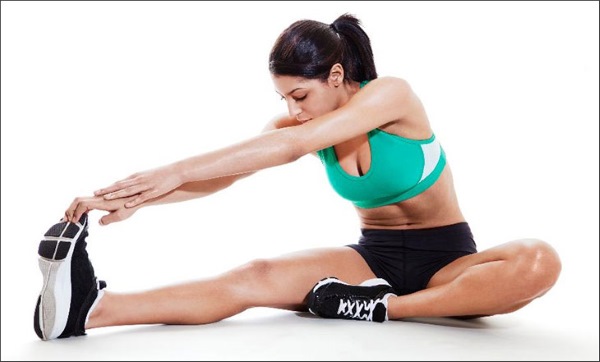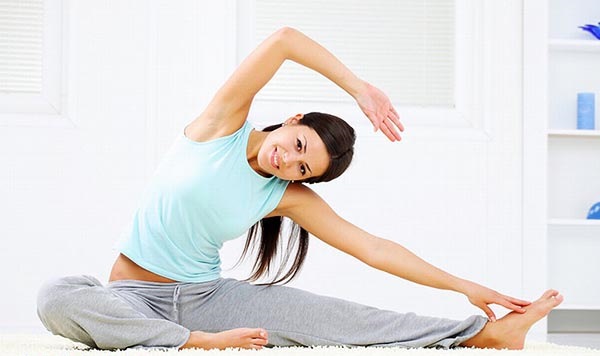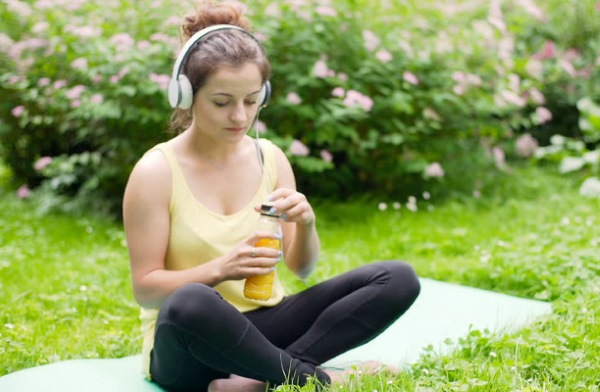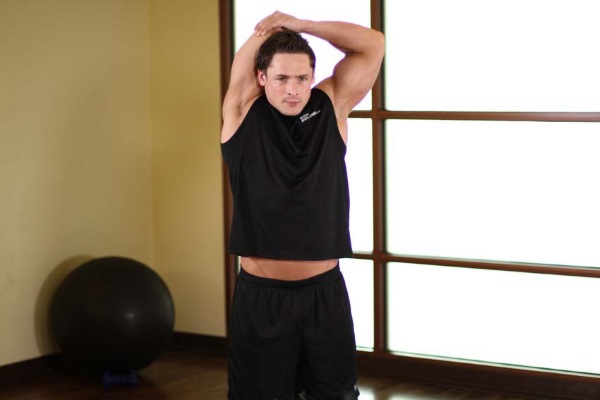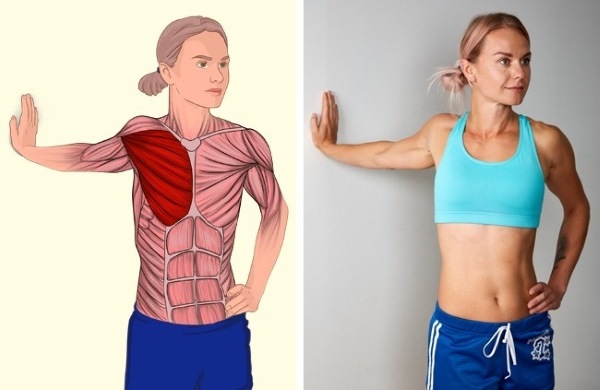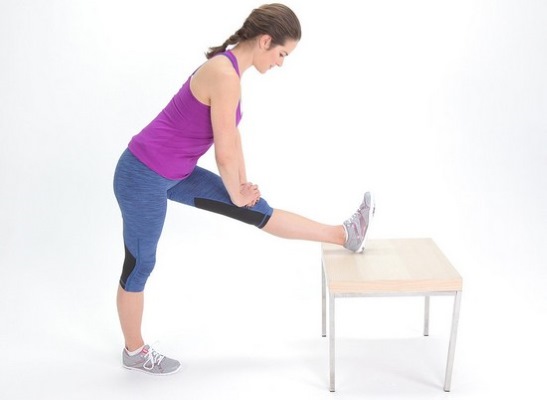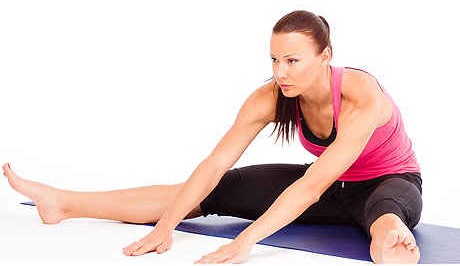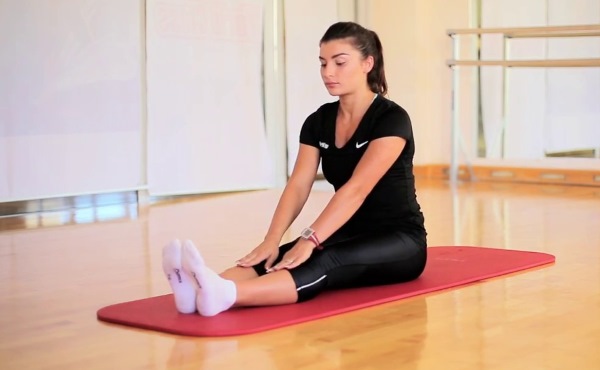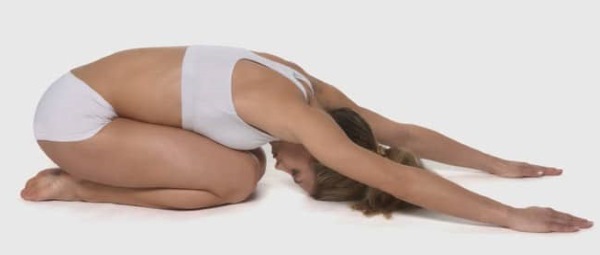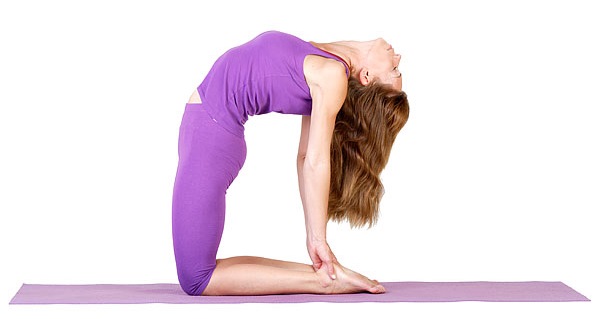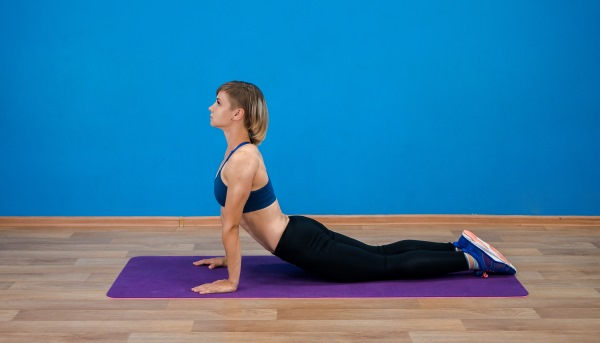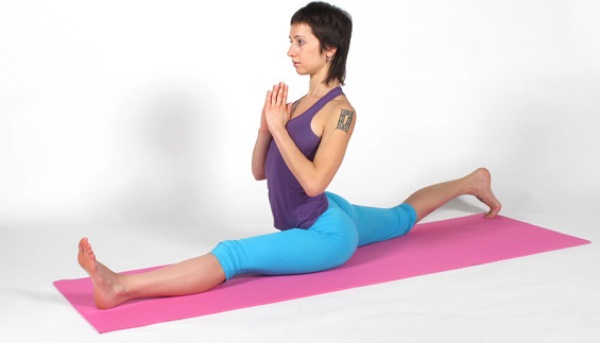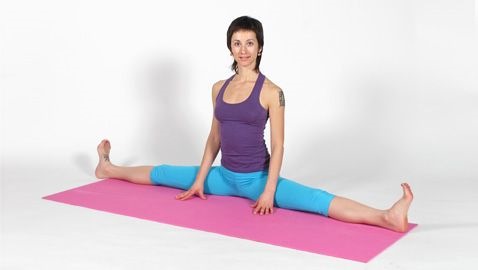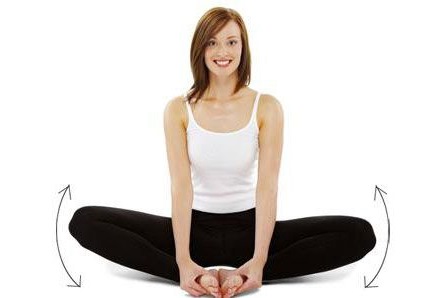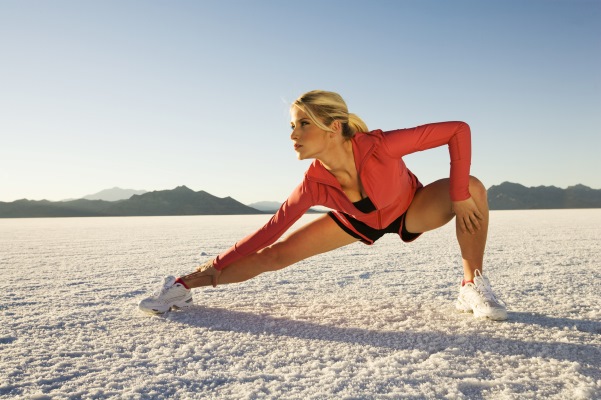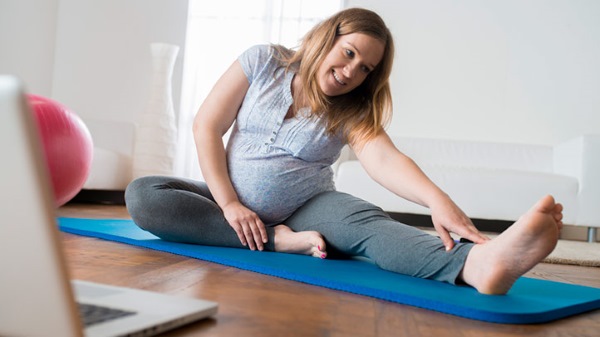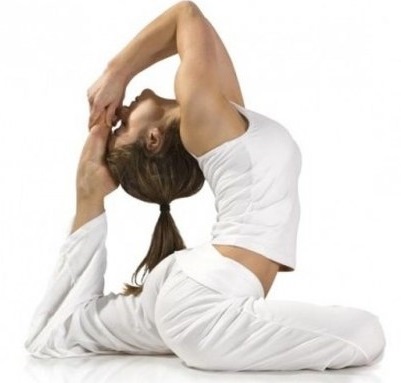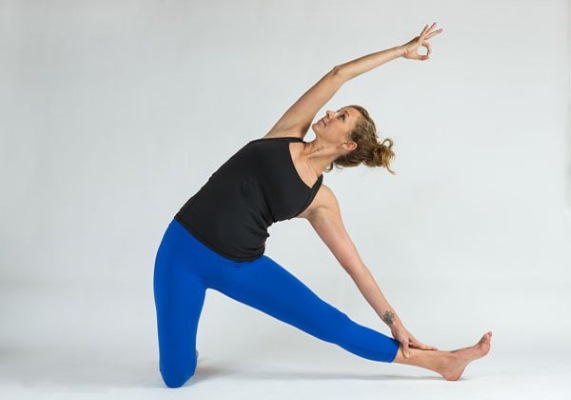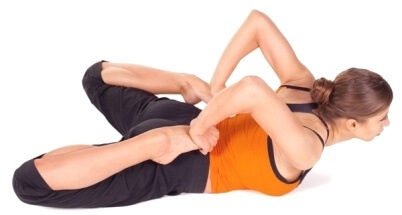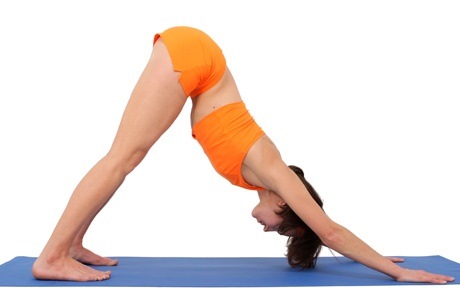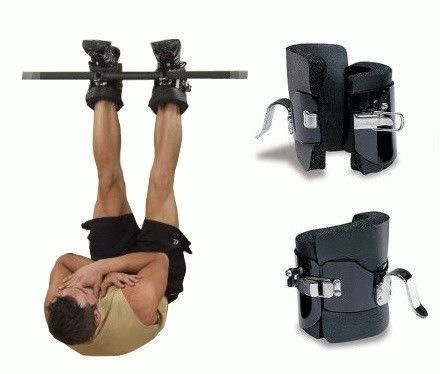Stretching (stretching) exercises are a popular form of physical activity. She is present in the training plans of professional athletes and novice adherents of an active lifestyle. Information about the features and effects of stretching on the body will help you to get to know the demanded direction of fitness better.
Stretching benefits
Stretching is a form of fitness aimed at increasing body flexibility and creating an attractive silhouette. Stretching - another name for training - translated from English means "stretching". The positive effect of stretching is achieved by alternating periods of stretching and relaxing the muscles.
Stretching Benefits:
- No age restrictions.
- Ability to study at home.
- Exercises of different difficulty levels for any physical fitness.
- Formation of a slim figure. Stretching draws muscles, but does not increase their volume.
- Maintaining the youthfulness of body tissues.
- Improving the blood supply to internal organs.
- Relaxation.
Weaknesses of stretching exercises:
- The achieved indicators of flexibility require constant supportive training. Otherwise, the body will lose its elasticity again.
- Fast results are not guaranteed. You need to tune in to work hard on the body.
For whom stretching is not recommended
Health problems - grounds for a ban on stretching:
- Spine diseases.
- Injuries to muscles, joints and ligaments.
- Vascular problems.
- Heart diseases.
- Hernia.
Types of stretching
| View | Characteristic | Who is it for |
| Static | Stretching the muscles and holding them in a fixed stretched position for a few seconds | For beginners |
| Dynamic | Muscle stretching during active movements: swings and jerks. Exercise involves a gradual increase in range of motion and increased muscle stretching. | Experienced amateur and professional athletes |
| Ballistic | Stretching with sharp jerks | Exclusively for professionals: dancers and athletes |
| "Air" (aerostretching) | Exercises on special suspended loops under the guidance of an instructor | For prepared clients of fitness centers with experience of training in "ground" stretching |
Tips for Beginners
Answers to the basic questions that beginners in stretching will have will help make training clear and effective:
- How to dress? There are no strict requirements for clothing and footwear for stretching. The main condition is convenience. It is allowed to practice barefoot.
- How much to do? A serious approach requires 5-6 lessons per week. A more gentle option is at least 2 workouts. Each stretching session lasts from 30 minutes to an hour. The optimal amount of exercise is 15.
- How to choose exercises? Novice athletes are encouraged to take simple options and achieve high-quality performance. As you develop flexibility, you can gradually increase the level of difficulty of the activities.
- How long do each exercise take? With static stretching in an extended position, you need to linger for up to 40 seconds. In dynamic exercises, do 20 reps in 1 set. For the best training result, it is recommended to do up to 3 approaches.
- What to look for when exercising? Breathing should be deep and even, without delay. When stretching your legs, you should not bend your knees too much: this increases the risk of injuries in the ligaments. It is optimal to keep them slightly bent. The goal is to feel the stretch in the leg muscles, not the ligaments in the knees. Severe muscle pain after stretching is a sign of muscle congestion and a reason to take a break from training.
When performing any stretching exercise for beginners, you need to feel the tension in the muscles - When to expect the result? With intense training and average physical data, the body will become more flexible in a couple of weeks after starting stretching.
Stretching at home: how to stay motivated
Stretching for beginners is an exercise you can do at home.
Pros of self-study:
- Save money on fitness center visits and instructor services.
- Choosing a comfortable time and training regime.
- Lack of witnesses to possible misses and failures.
Weak sides:
- Danger of injury without professional instruction.
- Limited exercise choices: Home size and budget may not always accommodate exercise equipment at home.
- The risk of losing motivation and abandoning classes.
In order not to leave the race, supporters of independent stretching should set aside a fixed time for training in their usual daily routine. To stay motivated, you need to make stretching an enjoyable activity.
The attractiveness of the activity can be increased by purchasing a beautiful tracksuit and related products such as an exercise mat on the floor. An aesthetic environment will keep your workout fun and keep it from becoming a boring routine.
Music for stretching
Stretching is a type of fitness that can be combined with listening to music. Music lessons allow you to combine business with pleasure, set the right pace for your workout and focus on the exercises without being distracted from them. The duration of the composition should correspond to 1 group of exercises.
The choice of compositions depends on individual tastes. Smooth melodic songs and instrumental pieces are a priority. Beginners are not recommended to play rhythmic music with a fast beat: dynamic jerks to the beat of the song are fraught with ligament breaks.
Music directions compatible with stretching classes:
- Classic.
- Soul.
- Jazz.
- Pop hits.
- Club music.
You can use the ready-made stretching playlists, or make a list yourself.
Examples of compositions:
- Madonna "Frozen".
- Adele "Skyfall".
- Lana del Ray "One Million Dollar Man".
- David Usher "Black Heart".
- Ellie Goulding "Love Me Like You Do".
- Strauss Waltzes.
- David Garreth (arrangements of classics and pop hits).
Training procedure
Stretching consists of three parts:
- Warm up.
- The main set of exercises.
- Hitch.

Warming up is designed to warm up your muscles, prepare your body for physical activity, and prevent injury. Simple exercises performed at a brisk pace are suitable for her: jumping, bending, raising arms and legs.
The main part of the lesson includes stretching exercises for different muscle groups:
- Back.
- Abdominal Press.
- Shoulder girdle and arms.
- Lower body.
The order of working out the zones of the body is any. Static exercises are done first, then dynamic ones.
Hitch - relaxation of the muscles. During the hitch, you need to lie down calmly, focusing on relaxing the muscles.
Upper body stretching exercises
Triceps of the arms:
- The starting position is standing. Extend your right arm straight up.
- Bend your right hand at the elbow, putting it behind your head.
- With your left hand, grab the elbow with your right and gently pull.
- Remain stretched for 10 seconds.
- Do the exercise by swapping hands.
Chest:
- The starting position is standing near the wall.
- Lean your forearm against the wall.
- Turn the opposite side of the body back. Hold the pose for 10 seconds, feeling a stretch in the pectoral muscles.
- Repeat on the other side of the body.
Shoulders:
- The starting position is standing straight.
- Bend your arms at the elbows.
- Put your hands (one above, the other below) behind your back and connect them with a "lock".
- Stretch your arm muscles.
- Swap hands and repeat the exercise.
Lower body stretch
Hips:
- The starting position is standing.
- Bend 1 leg at the knee and lower on it.
- Straighten and put back the second leg.
- Bend your body straight forward, trying to touch the floor with your elbows.
- Repeat the exercise on the 2nd side of the body.
Calf muscles:
- The starting position is standing.
- Put the front part of 1 foot on a dais (step, crossbar).
- Pull the foot towards you, feel the stretch of the lower leg muscles.
- Repeat for the other leg.
Back of the thigh:
- The initial pose is sitting with legs wide apart.
- Lean forward without bending the lower limbs at the knees.
- The goal is to lower the body to the floor.
Back stretch
Seated back stretch:
- Starting position - sitting with legs straightened forward.
- As you exhale, slowly tilt the body towards your legs. Hands in front.
- The goal is to touch your toes with your hands. Stay stretched for 15 seconds.
"Baby":
- The initial pose is on all fours.
- Bring your hips back while straightening your arms.
- Sit on legs bent at the knees. Arms are straightened, face down.
- Feel the stretch in the back muscles.
"Mill" - dynamic stretching for back muscles:
- Starting position - standing, legs are wider than shoulders.
- Straighten your arms to the sides.
- Make bends with body turns, trying to alternately touch the floor with straightened right and left hands. In this case, the other hand is directed vertically upward.
- Do 20 bends.

 Don't miss the most popular column article: Body drying for girls. Training program, detailed nutrition menu for a month by day.
Don't miss the most popular column article: Body drying for girls. Training program, detailed nutrition menu for a month by day.Stretching the abdominal muscles
"Camel":
- Starting position - kneeling, feet shoulder-width apart.
- Lean back, touching your feet with your hands.
- Feel the stretching of the spine. The head is pointing up.
Stretching from a prone position:
- The initial position is lying on your stomach. Place your hands on the floor.
- Sequentially raise your head, chest and abdominal region, stretching your arms and leaning on them.
- Tighten your buttocks.
Back bends:
- The starting position is kneeling. Straighten the feet and place them wider than the hips.
- Get down on the buttocks.
- Lie on your back. The legs bent at the knees remain under the body.
Perfect twine
The split is an acrobatic figure, presented in 2 varieties:
- Longitudinal twine: one straightened leg is in front of the body, the other is behind. The pelvis is perpendicular to the floor surface.
- Cross twine: the straightened left and right legs are spread apart in the corresponding directions from the body.
In both cases, the legs should be firmly pressed to the floor and together form a straight line. Stretching for beginners splits landing exercises will not only allow you to perform an acrobatic figure, but will also benefit the body.
The positive effect of the twine:
- Formation of a relief silhouette of the leg muscles.
- Working out the press.
- Activation of blood circulation in the pelvic region.
- Stimulation of the digestive system.
- Development of elasticity of the ligaments of the groin area. This is true for pregnant women: flexible ligaments can facilitate the process of childbirth.
The main task for those wishing to sit on the twine is to achieve muscle flexibility in the hips, pelvis and groin area.
Twine landing exercises should be given about 5 days a week. The duration of the workout is 40-50 minutes.
The speed of the result depends on the natural data and the intensity of the classes. With a conscientious approach to training and average natural data, the path to the longitudinal twine takes about 4 months, to the transverse one - six months.
Twine stretching exercises
"Butterfly" - stretching the muscles in the groin area:
- The starting position is sitting on the floor.
- Bend your legs at the knees, spread them to the sides and pull them to the body. The feet touch each other.
- Put your hands on your knees, trying to press them to the floor.
The rolls are transverse. Working out the gluteal muscles:
- The starting pose is standing on the floor with your legs wider than your shoulders.
- Sit down on 1 leg, straightening the other. The supporting foot is on the floor. The toe of the 2 limbs looks up.
- Pull the muscles of 2 legs, feel the tension of 1 buttocks.
- Roll slowly from the first leg to the second, making it a pivot. Move close to the floor. During the roll, feel a stretch in the groin and inner thighs. Repeat the rolls 20 times.
Lunge with body turn. Development of flexibility of the buttocks, ligaments in the hips and lower back:
- The starting position is standing.
- Bend your right leg at the knee, go down, making it a supporting one. Straighten your left leg and take it back. Keep your hands on your supporting right leg, keep a straight posture.
- Sink closer to the floor, reaching tension on the ligaments in the hips and gluteal muscles. Remain stretched for 15 seconds.
- Pivot the housing carefully to the right. Hold in maximum stretch for 10-15 seconds.
- Change the position of the body by turning it to the left and stay in this position for 10-15 seconds. During turns, feel the stretch of the groin and gluteal muscles.
- Repeat on the other side of the body.
Video tutorial on stretching for twine at home:
Stretching during pregnancy
Stretching for beginners is an exercise suitable for fitness during pregnancy. The main purpose of stretching for pregnant women is to increase the elasticity of muscle tissues and ligaments and prepare them for childbirth.
Benefits of stretching during pregnancy:
- Relief of lumbar back pain.
- Reducing the trauma and pain of childbirth.
- Reducing the risk of postpartum stretch marks in the abdomen.
- Digestion activation. During stretching of the hip and abdominal zones, blood flow to the organs of the gastrointestinal tract increases. Thanks to this, it is possible to establish the functioning of the intestines.
Contraindications to stretching exercises are dictated by disorders of well-being and problems with bearing a baby:
- High blood pressure.
- Weak walls of the internal genital organs.
- Risk of fetal death and early birth.
- Bloody issues.
- Painful sensations in the back and lower abdomen.
Stretching for beginners (exercise with caution during pregnancy) should be simple. Starting position - sitting on your knees or buttocks. Standing exercises are allowed, but in minimal quantities: they threaten to increase the load on the legs and spine.
Prohibited types of stretching during pregnancy:
- All dynamic exercises.
- Tilts of the body from a standing position.
- Lying on your back.
The rules for stretching exercises during pregnancy will help not to overload the body and get the most benefit:
- The duration of the lessons is up to 20 minutes.
- A prerequisite is the absence of discomfort.
- The main rule when doing the exercises: no fanaticism. You do not need to strive for records of flexibility, load the body with long exercises and a fast pace.
- The optimal number of approaches for each exercise is 3 with a subsequent increase in stretching. The muscle is held in a stretched state for up to 10 seconds.

 Don't miss the most popular column article: Morning exercises for those over 40, 50. Gymnastics exercises for weight loss, video tutorials.
Don't miss the most popular column article: Morning exercises for those over 40, 50. Gymnastics exercises for weight loss, video tutorials.Stretching in yoga
Stretching - for beginners and advanced yogis, is an integral part of the practice. These exercises allow you to achieve harmony of mind and body.
Yoga asanas (postures) are divided into 2 groups:
- Power.
- Stretching.
Strength positions are aimed at gaining strength. Stretching asanas, on the other hand, are relaxing.
The combination of both types of postures in practice ensures the balance of multidirectional energy flows. Together they create a balance of strength and peace.
Stretching properties that make it a must-have part of yoga:
- Relaxation of muscles. Strength asanas make the body firm, but increase the tension in the muscles. It creates barriers to free energy flows and is fraught with the accumulation of negative emotions. Stretching the muscles releases them from the clamps.
- Increase flexibility of muscles and ligaments and improve blood circulation. Stretching creates conditions for the unhindered movement of energy flows.
Examples of stretching yoga poses
Asana "Gate" warms up the muscles, stretches the back:
- The starting position is kneeling.
- Straighten your right leg and set it aside.
- Inhale and at the same time point your left hand straight up. You need to feel the stretch in your back and spine.
- As you exhale, move your right hand down your right leg.
- A new breath - simultaneously bend the chest forward, directing the left shoulder blade back.
- Hold for several out-breaths and repeat for the other side of the body.
Asana "Frog" stretches the muscles of the legs and feet:
- Starting position - lying on your stomach. The arms are straightened.
- Exhale while bending your knees. Bring the heels closer to the buttocks.
- Grab the right foot with the right hand, the left with the left. Maintain the pose for 2 breaths.
- Exhale, lifting the body and head from the floor. To look up.
- Change the position of the hands: they must hold the feet on top.
- Lower your palms closer to your toes. Direct your heels towards the floor and try to touch it. Hold the pose for about 20 seconds.
Asana "Downward-facing dog" - stretches the back of the legs, relaxes the muscles of the back and spine:
- The starting position is lying on your stomach.
- Exhaling, rise and fix the pose, leaning on your knees and hands.
- Raise the pelvis, bending down the lower back.
- Exhale while lifting the knees. Lean on your toes.
- Straighten your arms and legs, raise your hips. Stretch the spine and feel the leg muscles stretch. Hold the position for several breaths.
Stretching machines
Muscle stretching with special devices is an alternative to exercises for beginners. You can work with the stretching machines at the fitness center, or purchase a device for home use. The products are sold in sports stores and on the Internet.
All simulators are divided into 2 groups depending on the object of study:
- Body and spine.
- Legs.
Body training devices:
- Inversion table - platform with an adjustable angle of inclination. The user lies down on it so that the head is below the legs. Stretching occurs due to the athlete's own weight.
- Inversion boots - Shin pads designed to be attached to the horizontal bar. Allows you to hang upside down from the bar without using your arms.
Leg trainers:
- For stretching on a twine - a structure for raising the legs in a transverse twine. The product is equipped with a tension control lever.
- For feet - devices put on the legs. They are intended for the treatment and prevention of flat feet.
Benefits of using simulators:
- Reducing the risk of injury: the user can control the degree of stress on the muscles, avoiding overestimating their flexibility.
- Effectiveness and quick effect of training.
- Lack of discomfort and pain.
Minuses:
- Cost. It starts at around 4000 rubles.
- Dimensions. The largest simulators are inversion tables.Their use in a standard city apartment is difficult. Leg stretchers are more compact. You can find foldable leg stretchers.
Stretching is a type of fitness that suits beginner athletes. Stretching will allow you to form an attractive silhouette, relieve muscle tension and prolong the youth of the body.
Article design: Svetlana Ovsyanikova
Video on the topic: stretching for beginners, exercises
Stretching exercises for the legs and back for beginners:

